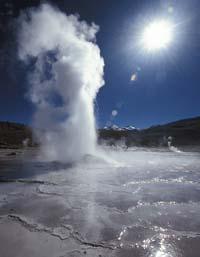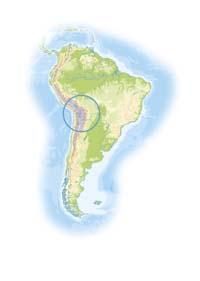Geysers of Tatio

Currently there are around 1,000 geisser in the world... of which 80 are located in Chile, 4,300 meters above sea level in the Andes. These geysers form a geothermal zone called Tatio Geysers.
Geysers are activated every day at dawn… early in the morning. By 5:30 in the morning, the water boiling in the ground begins to emerge in small jets. The outside temperature is always very cold, so the contrast of hot and cold water outside gives rise to large fumaroles. In a few minutes, the entire geyser area is filled with steam columns that leave towards the sky.
The water comes out at 85 degrees and in some areas produces small natural pools. These are hot springs that people take advantage of to bathe.
The geyser area of Tatio is surrounded by mountains that reach 6,000 meters in height. One of these mountains is the Tatio volcano, located 10 km from the area. Both geysers and the volcano are part of a larger volcanic area called Puna. This area has an area of 50,000 km 2 and reaches Bolivia. The Tatio volcano has not experienced eruptions in the last 10,000 years, but the volcanic field of Puna remains active under the earth's crust, so geysers are formed.

Geysers throw rainwater and snow. The water is filtered underground 20 km from the Tatio area. This water starts from a fault system until it reaches underground reservoirs. When the water is collected in the reservoirs, it begins to heat up due to the heat of the magmatic rocks. We fill the reservoir and finally the hot water rises by convection through natural tubes that reach the earth's surface... is when the geysers are formed.
When underground reservoirs expel excess water, pressure decreases and geysers stop. The show lasts about an hour and a half. The calm will last until the next day.
Buletina
Bidali zure helbide elektronikoa eta jaso asteroko buletina zure sarrera-ontzian











